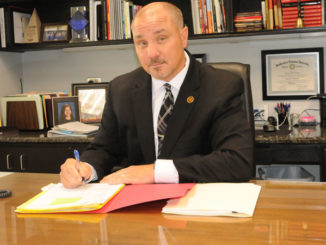
The recent outbreak of factory flares, combined with 327 odor complaints so far this year, are literally adding fuel to the fire that the air St. Charles Parish residents breath may be laced with chemicals.
However, the Louisiana Department of Environmental Quality and the Enviromental Protection Agency say the air quality in St. Charles Parish is good. Air monitors in Kenner and Hahnville help ensure that the air quality is within the normal limits for residents living in the parish. Those flares, while scary to witness, also act as a safety mechanism that prevents excess chemicals from entering the atmosphere.
“Flaring is done as a result of an upset or malfunction at a facility, and if the company can’t recover the material (chemicals) and put it back into their system, it is burned off,” Jennifer Mouton, administrator for the air quality assessment division, said.
Facilities have to account for the number of times they flare per year. Information provided by Tressa Tillman, a public information officer for the EPA, says ground-level or “bad” ozone is not emitted directly into the air, but is created by chemical reactions between oxides of nitrogen and volatile organic compounds in the presence of sunlight.
Emissions from industrial facilities and electric utilities, motor vehicle exhaust, gasoline vapors, and chemical solvents are some of the major sources.
“Breathing ozone can trigger a variety of health problems, including chest pain, coughing, throat irritation and congestion,” Tillman said. “EPA data states it can worsen bronchitis, emphysema, and asthma.”
Ground-level ozone can also reduce lung function and inflame the linings of the lungs. Repeated exposure may permanently scar lung tissue.
Mark Sathr, an environmental scientist from the EPA office for Region 6, which includes St. Charles Parish, says the air quality in St. Charles is within normal limits. The ozone layer is at 55, which is good, Sathr says.
“When we look at air quality, we look at the amount of emissions destroying the ozone layer and we consider pollutants created by automobiles, etc.,” Sathr said. “We have a rating scale that determines whether or not air quality is good in the parish.”
St. Charles Parish has a rating of 77 as of Oct. 2007.
“Anything below 85 is within the normal limits for air quality monitoring,” Sathr said. “In March of 2008, our office will be getting new ozone layer guidelines, but for right now the parish is in compliance with both the DEQ and EPA.”
St. Charles Parish has 27 plants; two are oil refineries, one nuclear plant, and three grain elevators.
Mouton says guidelines are in place to protect residents and to keep air quality within the guidelines.
According to the Environmental Protection Agency, air monitoring helps residents know essential information about the air they are breathing.
The Clean Air Act established two types of national air quality standards. Primary standards set limits to protect public health, including the health of “sensitive” populations such as asthmatics, children, and the elderly. Secondary standards set limits to protect public welfare, including protection against visibility impairment, damage to animals, crops, vegetation and buildings.
“There are seasonal changes that affect whether or not people in Louisiana cough or have reactions to the air,” Jim Hazlett, a scientist for DEQ said. “An increase in pollen and mold can affect residents. Anyone feeling these symptoms should check with a physician.”
Air monitoring warns residents within a community if the ozone layer has been affected.
“Air is monitored in Hahnville and Kenner for the St. Charles Parish area, and this area is well within compliance with DEQ and EPA guidelines and regulations,” Jennifer Mouton, administrator for the air quality assessment division, said.
And even though the air is monitored, there have been 327 bad odor complaints from residents living in various parts of the parish as of this month.
Emergency Operations Director Tab Troxler says he responds to all residents who call about a bad smell somewhere in the parish.
“When people call and say there’s an odor complaint we take it down, and we then contact the DEQ office and they take over from there,” he said.
The air quality scales in place for the parish determine whether or not pollutants from plants and motor vehicles are creating smog.
According to information obtained from the EPA, a diminished ozone layer allows more radiation to reach the Earth’s surface. For people, overexposure to UV rays can lead to skin cancer, cataracts, and weakened immune systems.




Be the first to comment